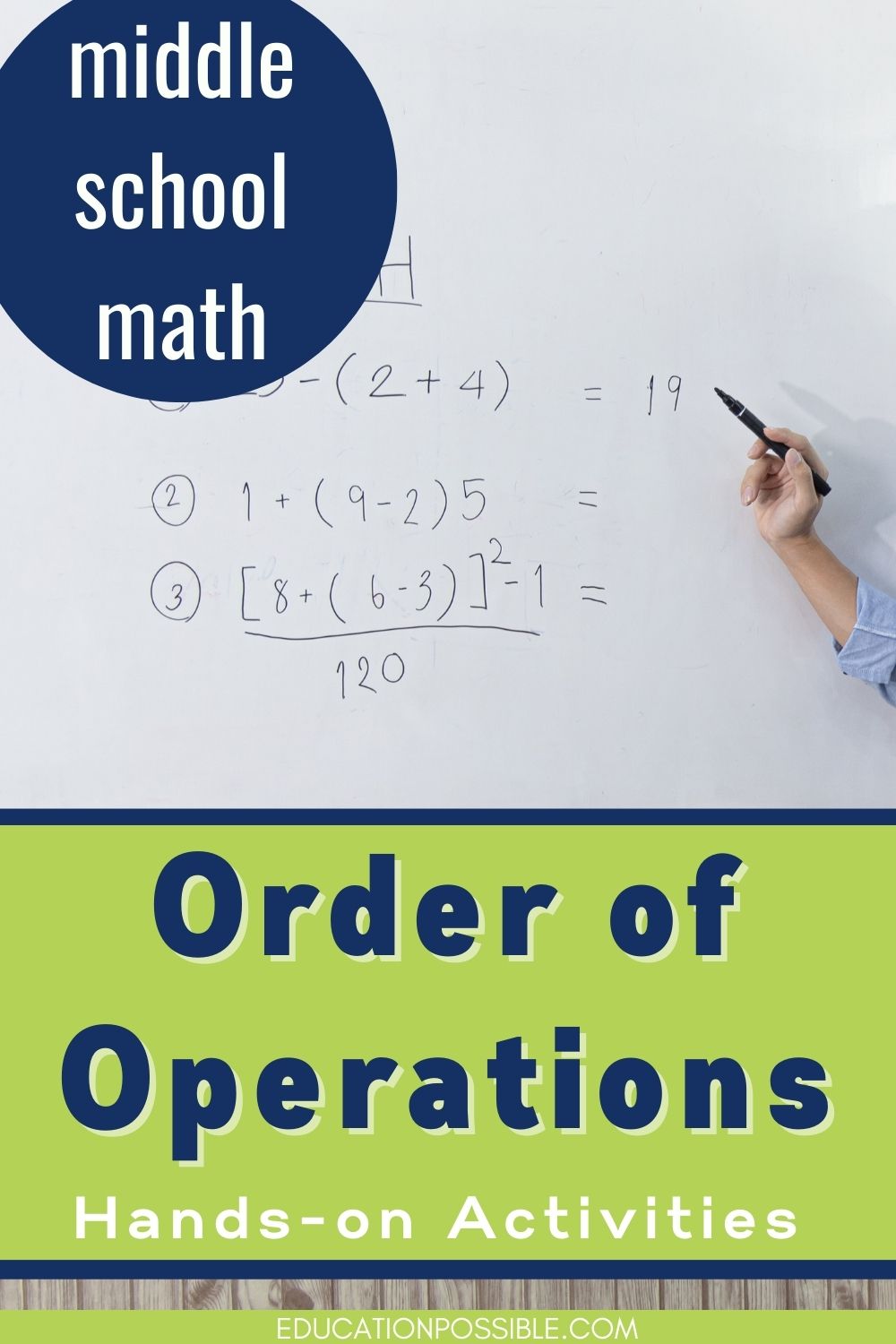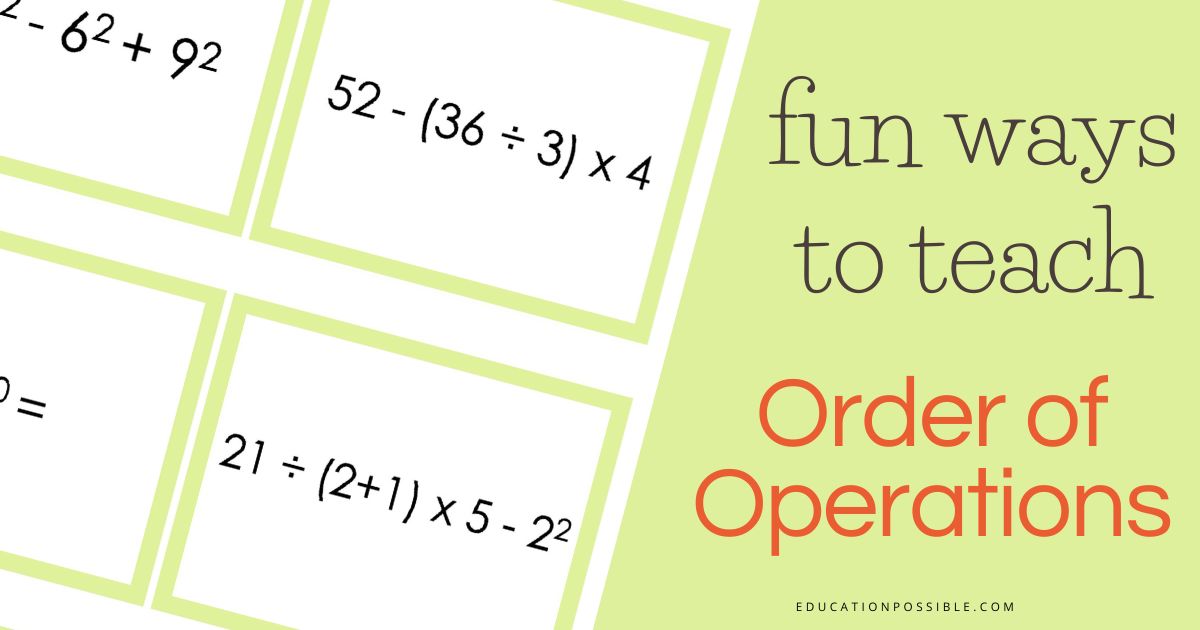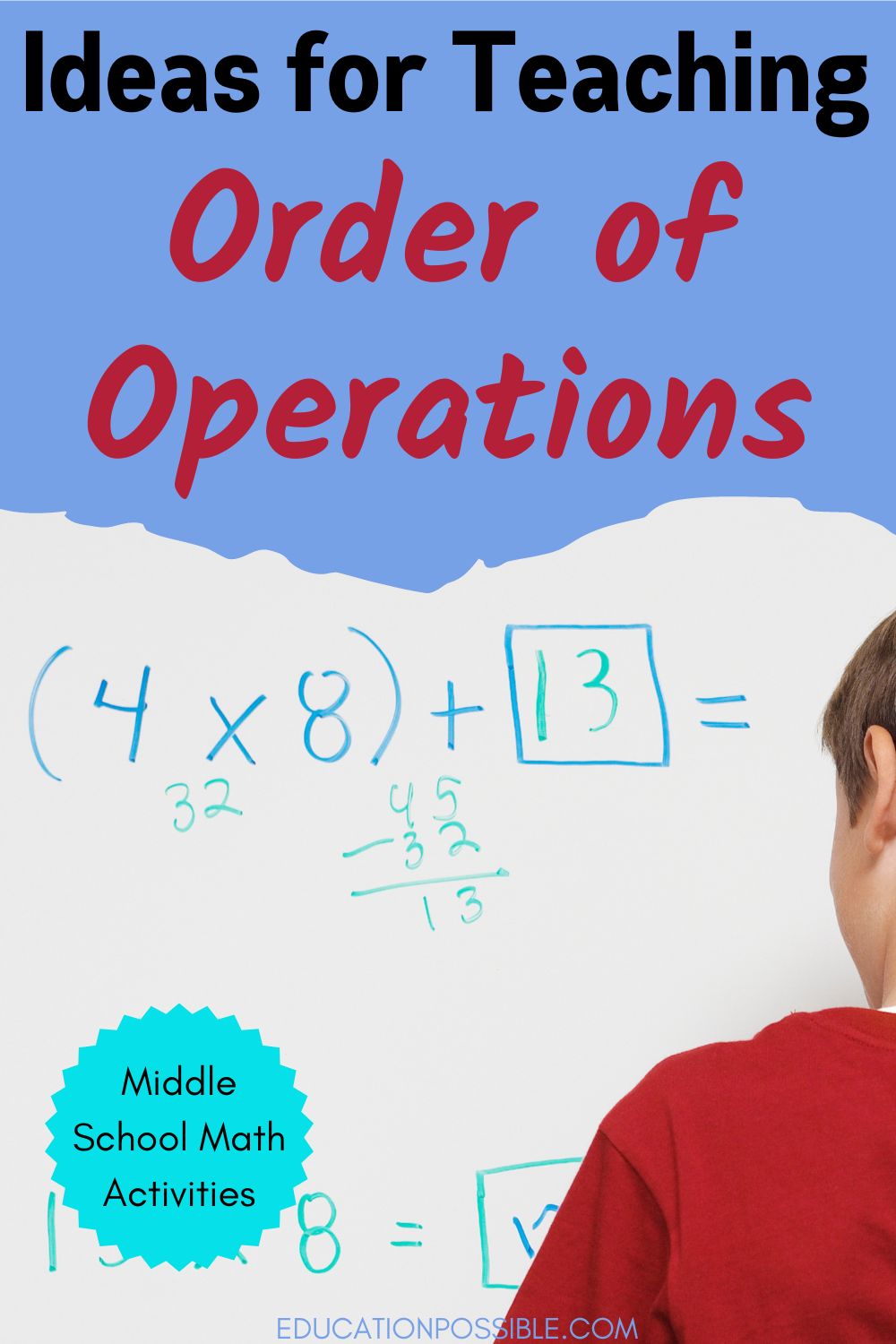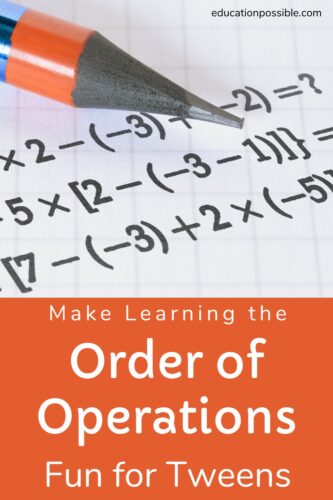Fun Ways to Teach Order of Operations
Make sure you add some of these fun ways to teach order of operations when teaching middle school math.
The order of operations tells us which parts of a math problem should be solved first and which should be solved last. Teaching students this concept can be difficult, so to make it easier, add some hands-on activities to your lesson plans.
These are all simple to implement and you’ll have no trouble using them alongside your math curriculum.

Show tweens that the order of operations can be exciting to learn. And once they get it, it will make the rest of math easy peasy.
Fun Ways to Teach Order of Operations
Do your tweens struggle with understanding how to apply the order of operations? Is it a challenging concept for you to teach? Don’t worry, it’s not as hard as it seems.
With a few creative activities, you can show middle schoolers that the order of operations is not only essential but also enjoyable.
When you add fun math activities to your lesson plans, tweens get to practice their skills while also enjoying themselves.
What is the Order of Operations?
The order of operations is a set of rules that tell us the correct sequence we have to follow in order to complete complex equations. Operations are arithmetic calculations, such as adding, subtracting, multiplying, and dividing.
If you complete these mathematical operations in different orders, you get different answers.
To solve this problem, mathematicians have agreed on a set of rules that tell us which operations to complete first. It’s known as the order of operations.
One of the most used methods is PEMDAS, which means:
- Parentheses
- Exponents (powers and square roots)
- Multiplication
- Division
- Addition
- Subtraction
Moving left to right in the math problem, work through these steps to assure you’re solving it in the correct order.
Check out this straightforward explanation of the order of operations.
PEMDAS Order of Operations Poster PEMDice Order of Operations Game
PEMDice Order of Operations Game Order of Operations Practice Problems with Step-by-Step Answers
Order of Operations Practice Problems with Step-by-Step Answers
Why is learning the order of operations important?
The main reason is so that teens know that they’re working on math problems correctly and getting the right answer.
The sequence of operations is an important stepping stone as students move into higher level math. They will need to master this order to build a strong foundation for the future.
That way, when they get complex algebra equations, they will understand how to work through the problem.
The order of operations is a universal standard, so it helps teens when they take tests like the SAT or ACT.
It’s also essential for real-world applications like engineering and computer programming. So when your child complains that they’re never going to use what they’re learning, you can tell them they might!

Ideas for Teaching the Order of Operations
This is a concept that takes lots of practice. The first step is to work through a bunch of order of operations problems. But only working through a series of questions can get repetitive and boring for kids.
So, while additional practice is necessary, it’s also important to add some of these fun ways to teach order of operations into your math lessons.
I know the goal is to build your tween’s knowledge of the order of operations, but it’s important that you make it as interesting as possible for tweens.
Hands-on activities are a fun way to make middle school math engaging.
Math Mnemonic Device
Challenge your tweens to come up with a mnemonic device to remember the PEMDAS method. Since this is a technique that helps us remember information easier, it can be a tremendous help for kids.
The traditional one is “Please Excuse My Dear Aunt Sally.” Using the first letter of each word, see what they can come up with.
Mastering the letters will help them quickly remember the order of the steps.
Order of Operations Math Task Cards
A great way to let middle schoolers practice this concept is to use these printable task cards. They’re free and simple to use. Just print them off and go!
The 20 different cards have math equations that kids will need to follow the correct order of operations to solve them.
They display the math problems in different styles, such as horizontal, vertical, and with the use of parentheses and brackets.
Kids will enjoy this fun activity and it will definitely give them plenty of practice with the order of operations steps.

Math Song
Encourage your students to get creative and turn the steps into a song. This is an excellent order of operations activity for creative kids. Just like with their ABCs, a song can be very helpful to remember the right order to solve math problems.
They can also have fun coming up with a beat or rhythm that will help them better remember the song and the PEMDAS steps.
If they cannot think of anything or need some inspiration, check out some order of operation songs on YouTube.
Math Poster
As they’re learning the correct way to solve math equations, have your child create a poster showing the order of operations for an easy reference.
They can make it on a piece of paper for their math notebook or make a wall-sized version.
Let them get creative. They can draw it themselves or design something on the computer. Either way, creating the poster will help reinforce the information for them.
You can always grab one of these order of operation posters for your homeschool room.
Math Card Game
Use index cards to make your own order of operations game.
Before you begin, write out a bunch of numbers and operations onto blank cards using a marker. Write one per card.
Then, separate them into two decks, one of operations and one of numbers. You can also use colored index cards and use one color for the numbers and one for everything else.
To play:
- Have students draw 4 cards from each deck. Write out separate parenthesis cards and give them a free set for each round. These are in addition to the 8 cards they’ve drawn.
- Then, they need to arrange their cards into a math equation. The goal is to come up with the largest number possible after solving the equation.
- If tweens aren’t happy with the number that comes from the equation they built, they can rearrange them into different combinations and try again. You can decide how many times they can rebuild their math problem.
- The player with the highest number, wins the round. Let everyone draw new numbers and play again.
Another variation is to see who can build a math equation that ends with the lowest number.
It’s such a fun game that lets kids work through different operations.

No matter which of these fun activities you choose, your tweens are bound to have fun working with math.
Use them along side your order of operations lesson to build your students’ understanding of this important concept.
More Math Resources
Looking for more ideas for making middle school math fun? Check these out. They’re the perfect way to get tweens engaged.
- Quick Math Games
- How to Make Middle School Math Fun
- Math Game to Build Mental Math Skills
- Making Math Fun with Games
What is your favorite way to teach tweens the order of operations?





